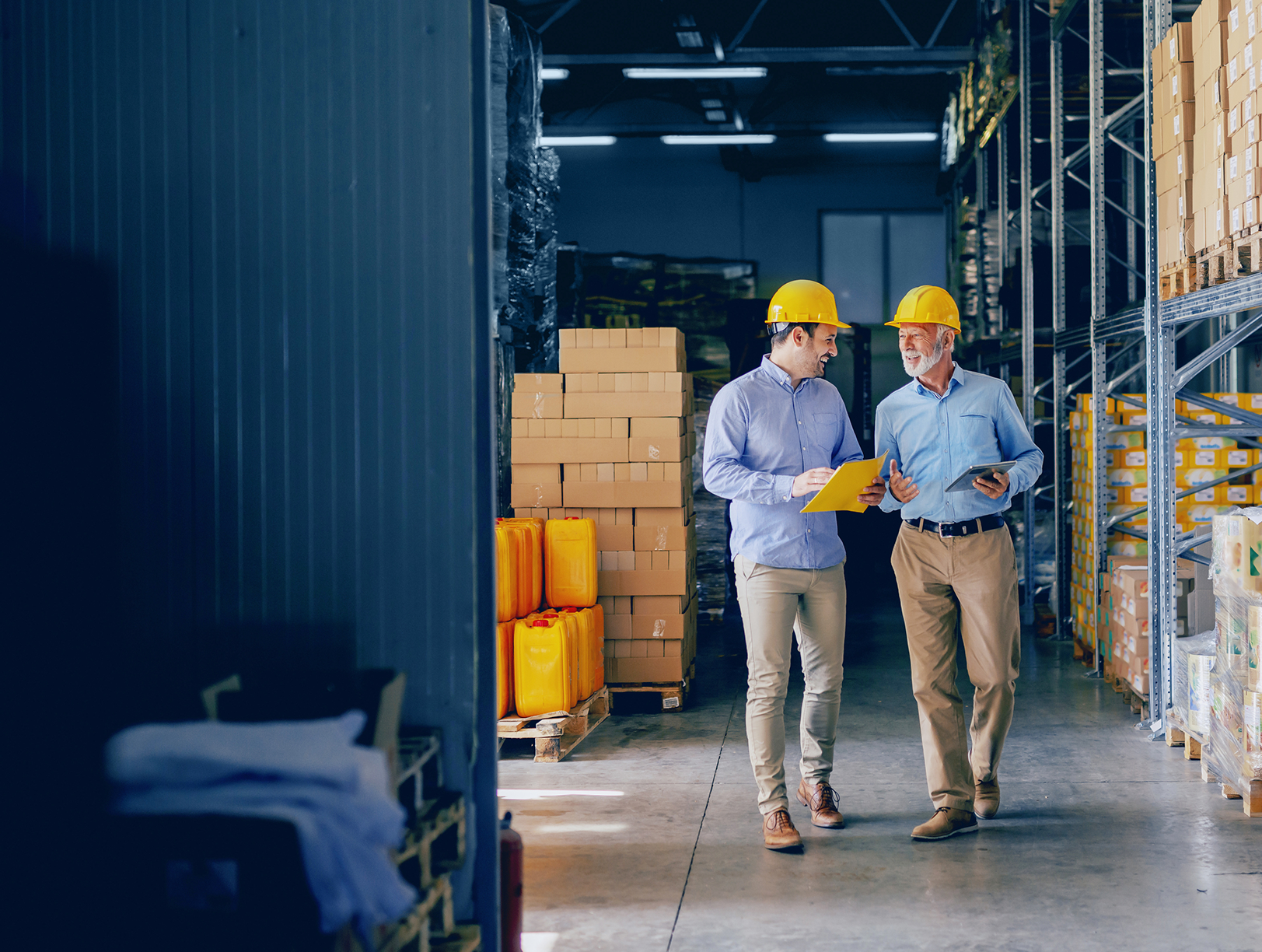Ergonomic Safety Solutions: How Exosuits are Transforming Global Food Logistics Operations & Worker Welfare
by Jennifer Jones, Director of Client Services, HeroWear | Sponsored Content, on Jul 3, 2025 3:41:46 PM

If there is one thing industry news and legislation over the last year has taught us, it is that worker safety cannot be an afterthought in today’s supply chain. The logistics industry is rapidly evolving, driven by increasingly complex operations, technological innovation, and the rapid adoption of automation. Embracing and familiarizing yourself with wearable safety technology not only safeguards employees but can position your organization as a market leader ahead of competitors, with a healthier and more productive workforce.
Occupational exoskeletons are an innovative wearable safety solution transforming food logistics operations around the world. This technology significantly enhances worker well-being and health in labor-intensive roles that require repetitive lifting and bending. Warehouse industrial athletes are essential to sustaining supply chain efficiency and deserve the best support for their backs so that they can go home at the end of each workday feeling energized, fulfilled, and experiencing less discomfort.
Protecting Workers from Back Injury
The warehousing and transportation sector has the highest rate of serious injury from overexertion in the workplace. Overexertion is one of the leading causes of musculoskeletal disorders (MSDs), which can result in lifelong physical health challenges for workers. Work-related back pain can account for 264 million lost workdays per year, costing businesses millions. Companies in the food logistics and transportation industry can take steps to protect workers from work-related strain by deploying wearable safety technologies, like exosuits (exos).
While there are different types of exos on the market today, the most widely adopted are those soft exos equipped with load-reducing elastic bands that function as an extra set of back muscles, providing maximum assistance during physically demanding tasks. By redistributing the strain placed on the back muscles, this level of back support can help reduce injuries and discomfort, thereby improving a worker’s quality of life, both on and off the job.
While automation and innovative robotic solutions have relieved some of the burden on workers by taking on tasks, exos still play a critical role when manual lifting is unavoidable. Data shows that severe injuries may decrease when automation is deployed, but strains and sprains often increase. Exos can help limit disorders that can still occur from the increased throughput that today’s automation environment demands.
Seamless Exo Integration in Dood Logistics
Flexible exos can be layered and exist underneath or on top of other required PPE, making it a great solution for those working in temperature-controlled environments. Workers anywhere won’t adopt new wearable technology if it gets in the way or is uncomfortable to wear while working hard. Ensuring that exos are comfortable to work in all day and can fit a wide range of users well is critical. It’s also vital to ensure that work patterns don’t have to be adjusted for the new exo, so things like the ability to move in tight spaces or sit on forklifts (or on a break) should be considered.
It’s also essential to identify and rely on scientific and industry-validated technology that has been tested in a multitude of environments. At one food logistics company, the industry study showed an average of 42% reduction in fatigue from heavy lifts and a 32% reduction in work-related lower back discomfort. Another study in a distribution center showed an 8% improvement in productivity due to decreased worker fatigue.
Recent field data shows how exos deployed at multiple food logistics companies enhanced the well-being of workers, with zero reported back injuries. This type of workplace data is promising for the industry and is most successful when training and change management are prioritized in the deployment of new safety programs.
Selecting an exo solution is only half the job, though. Change management is one of the main operational and administrative barriers to seamless integration of new technology in complex workplaces such as food logistics. Employees, supervisors, and even company leaders should be trained to understand why exos are being deployed and how exo technology works, in order to see the full benefits when deployed.
The Big Picture
Injuries from overexertion cost businesses up to$12.5 billion a year. These costs stem from worker compensation, high turnover rates, and a significant decrease in worker productivity — the direct results of an overexerted and unhappy workforce. When workplace discomfort and fatigue are decreased through strategic means, employees report being more energized and productive.
When back exos are properly implemented, it is statistically clear that added support in labor-intensive workplaces improves worker well-being, morale, productivity, and retention. This added support not only advances employees’ professional performance but also allows them to return home with more energy, improving quality of life both on and off the job.
Ultimately, it is essential to listen to your employees and invest in tools that support their daily experience and enhance their quality of life. The more you prioritize safety, the more engaged and satisfied your employees will be, driving productivity and long-term business success.
For more information, visit the HeroWear website.
Like this kind of content? Subscribe to our "Food For Thought" eNewsletter!
Now more than ever, professionals consume info on the go. Distributed twice monthly, our "Food For Thought" e-newsletter allows readers to stay informed about timely and relevant industry topics and FSA news whether they're in the office or on the road. Topics range from capacity, rates and supply chain disruption to multimodal transportation strategy, leveraging technology, and talent management and retention. Learn More



